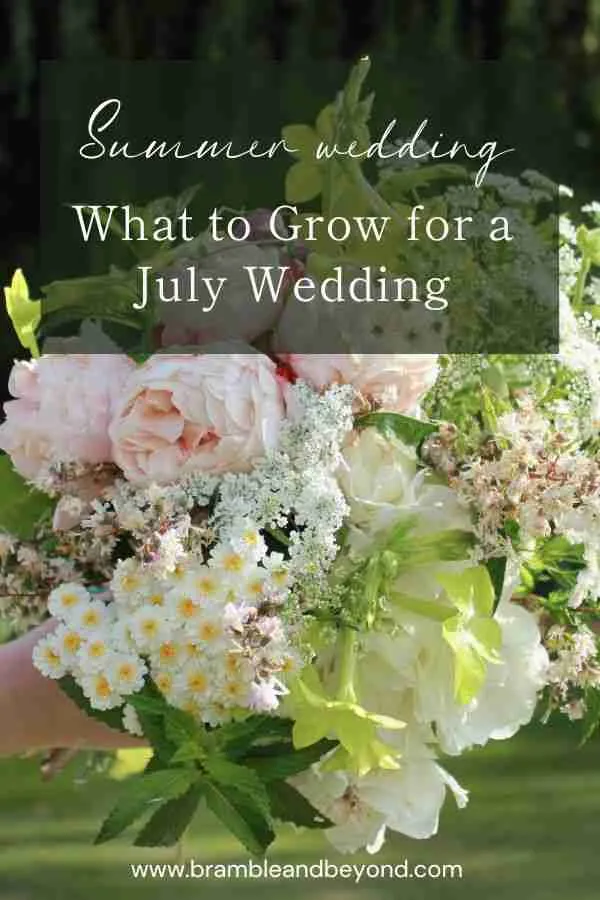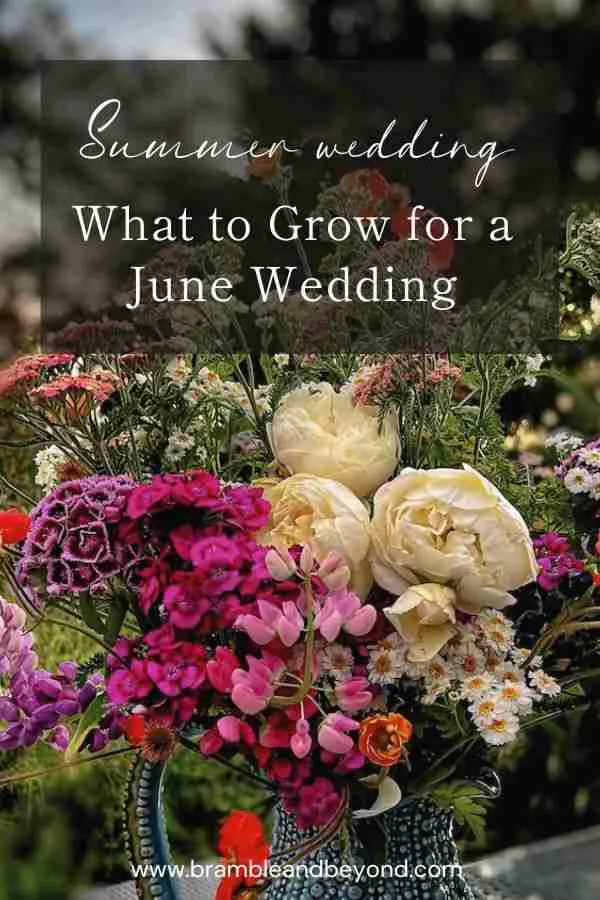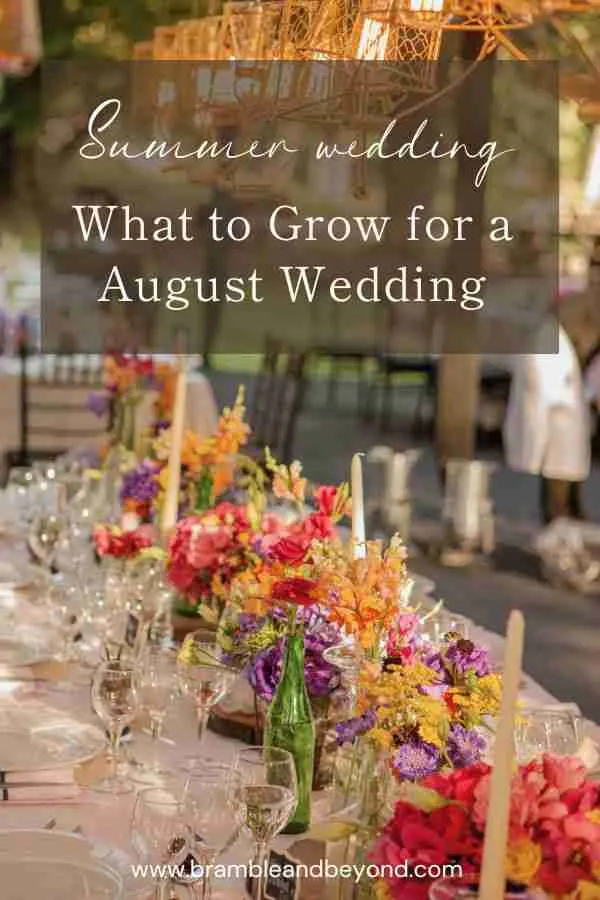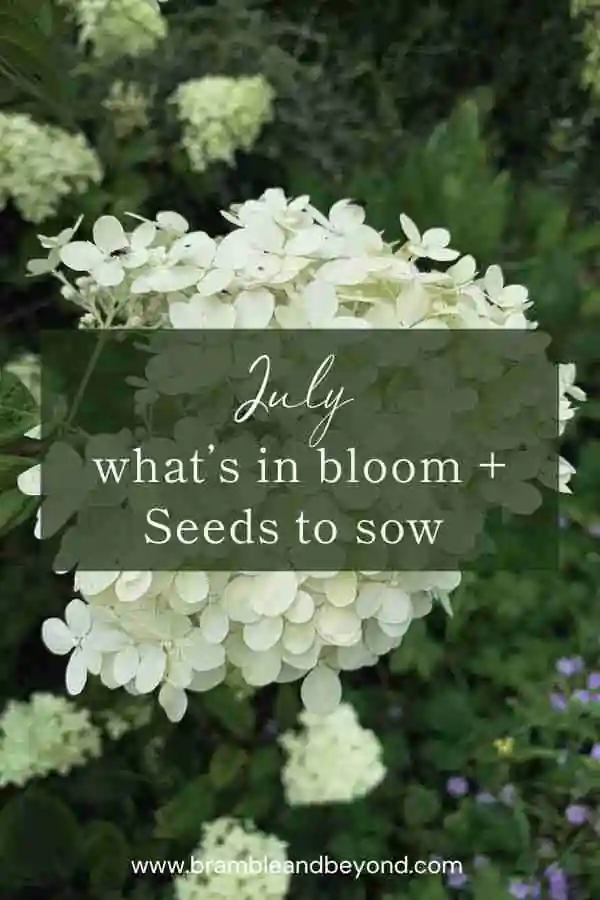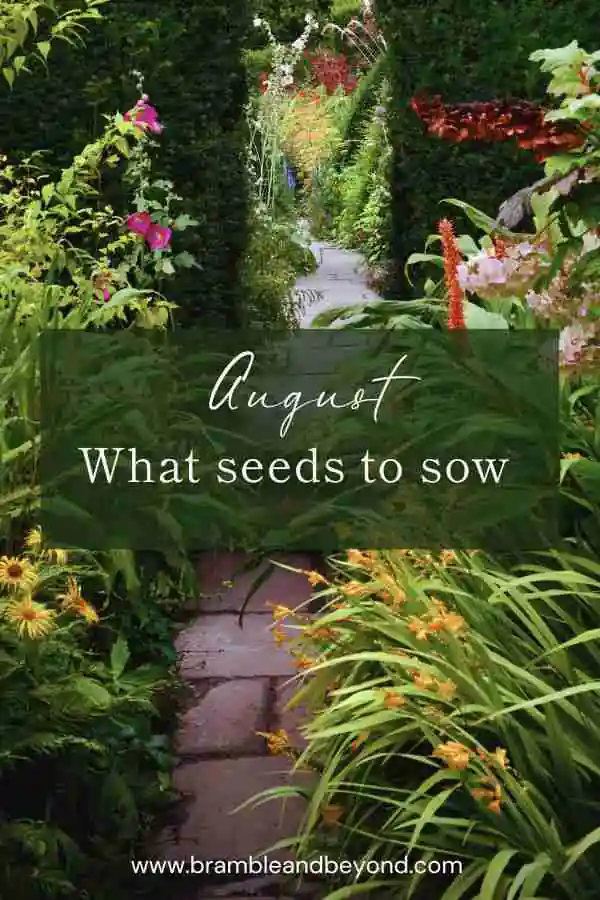Disclosure: This post may contain affiliate links, meaning I get commission if you decide to make a purchase through my links, at no cost to you. Please read my Affiliate Disclosure for more information.
Are you ready to add a burst of colour to your home with freshly cut flowers but are struggling to get something to flower in June? Look no further than biennial seeds. These carefully selected flowers require a little planning and effort, but with the proper care, they will provide early summer blooms next year and are perfect Flower seeds to plant in June.
In this article, I will explore what biennials are, why June is the perfect time to sow them, and which top biennial seeds will make for a successful cutting garden. By the end, you’ll have unlocked the secret to a perfect cutting garden that will start blooming in June.
What is the June gap in a garden – flower seeds to plant in June
The “June gap” is a term used to describe the period from late spring to early summer when the flowers in a garden that bloomed in May have faded, and the flowers that usually bloom in July have not yet opened, creating a lull period in your garden where you eagerly wait for the next plant to flower. Unfortunately, this is a common occurrence and can be a bit frustrating for flower gardeners who are eager to see their gardens in full bloom.
The June gap typically lasts for a few weeks, but its duration may vary depending on the climate and the types of plants in the garden. However, regardless of your location, there are ways to lessen its impact.
One way to minimise the effects of the June gap is to plant biennial flowers that bloom in their second year after planting. By sowing biennial flower seeds to plant in June, you can ensure that you will have beautiful blooms at the same time the following year, filling in the gap left by the fading May flowers.
What are biennials
Biennials are a special type of flowering plant that takes two years to complete their life cycle. In the first year, the biennial plant grows foliage and establishes its root system. Then, in the second year, the plant produces beautiful flowers, seeds, and sadly, it completes its life cycle. This means that if you sow biennial seeds in June, you can look forward to enjoying their lovely blooms in the early summer of the following year.
Understanding the life cycle of biennials and knowing the best time to sow them is really important if you want to create a cutting garden that thrives. By including these amazing plants in your cutting garden, you’ll have a wonderful variety of flowers to brighten up your vases in early summer.
Why do you sow biennials in June?
In June, it’s perfect to sow biennials because they thrive in cooler temperatures for germination and growth. By sowing the seeds in late spring or early summer, you give them enough time to establish their roots and foliage before winter. This results in stronger and more robust plants that will bloom beautifully the following year.
You can sow the seeds outside, in trays, or directly in the ground. Personally, I prefer sowing them in trays as it allows me to decide later in the season where I want to plant them.
June is the best time to sow biennial seeds if you want them to flower a year later, especially when there aren’t many other flowers blooming.
If you want an easy date to remember when to plant them, why not stick with the summer solstice (21st June). This is an ideal date as hopefully by then you will have completed all of your other June garden tasks and sown the last of your succession sown seeds.
Now, let’s discover some of the top biennial seeds for a successful cutting garden.
Top Biennial Seeds for a Successful Cutting Garden
To make sure you have an absolutely beautiful cutting garden next year, why not think about adding some of these amazing flowering biennial seeds to your June sowing plans? I’ve got a few top recommendations to help you get started:
Honesty (Lunaria annua)

Honesty, also known as Lunaria annua, is a beautiful plant that is native to Europe and Asia. It is a biennial plant, meaning it completes its life cycle in two years. One of the most striking features of Honesty plants is their attractive purple or white flowers and unique seed pods, which look like silver coins.
If you decide to grow Honesty plants, make sure to provide them with well-drained soil and partial shade. These plants can reach a height of up to 3 feet. They are commonly grown in cutting gardens because of their eye-catching seed pods, which are highly sought after for dried flower arrangements. Additionally, the delicate flowers of Honesty plants are a magnet for bees and other pollinators, making them a beneficial addition to any garden.
When arranging flowers, the Honesty flowers can be used as excellent filler flowers. However, if you choose not to pick them, you can let the flowers mature and harvest the seed heads in autumn. If left uncut or not deadheaded, the plants will self-seed easily, ensuring their presence in your garden for future seasons.
Sweet Rocket (Hesperis matrononalis)
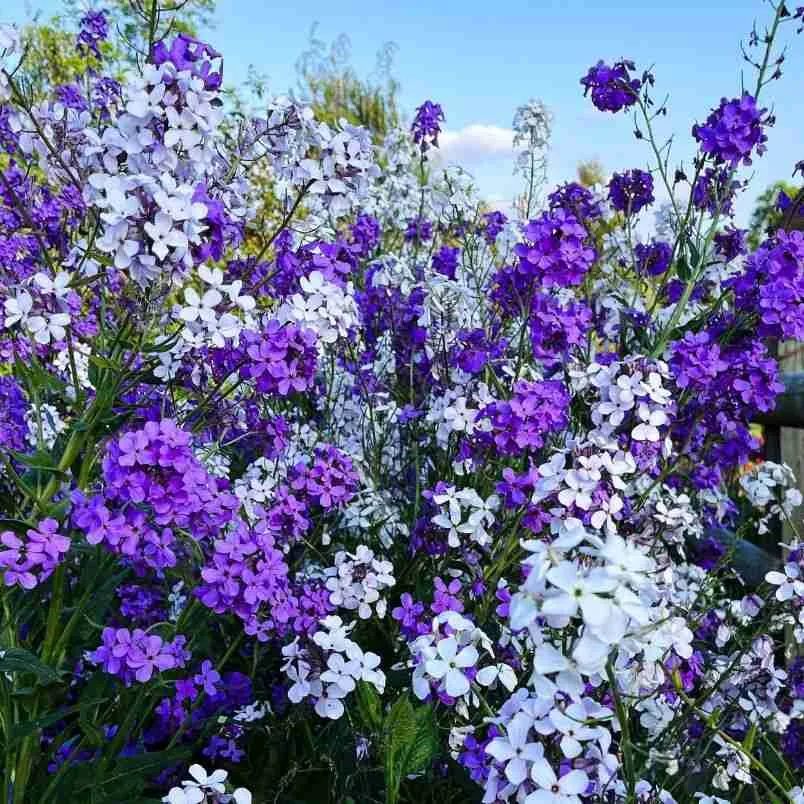
Sweet Rocket is a lovely biennial plant that produces tall spikes of fragrant flowers in shades of white, pink, and purple. It can grow up to 3 feet tall and thrives in areas with full sun to partial shade. The flowers and plant bear a striking resemblance to Honesty, with similar beautiful colours. Not only is this plant lovely, but it also emits a delightful sweet scent. If you have both Honesty and Sweet Rocket in your garden, you can enjoy the Honesty for its seed heads and the Sweet Rocket for its charming flowers. Although you may find that Honesty tends to bloom a little earlier than Sweet Rocket.
Adding Sweet Rocket to your cutting garden is a fantastic idea, as its flowers serve as excellent filler blooms in arrangements. Additionally, these flowers are quite attractive to bees and other pollinators. The best part is that Sweet Rocket is easy to grow and requires minimal maintenance, making it an ideal choice for beginner gardeners or those who prefer low-maintenance gardens.
Foxglove
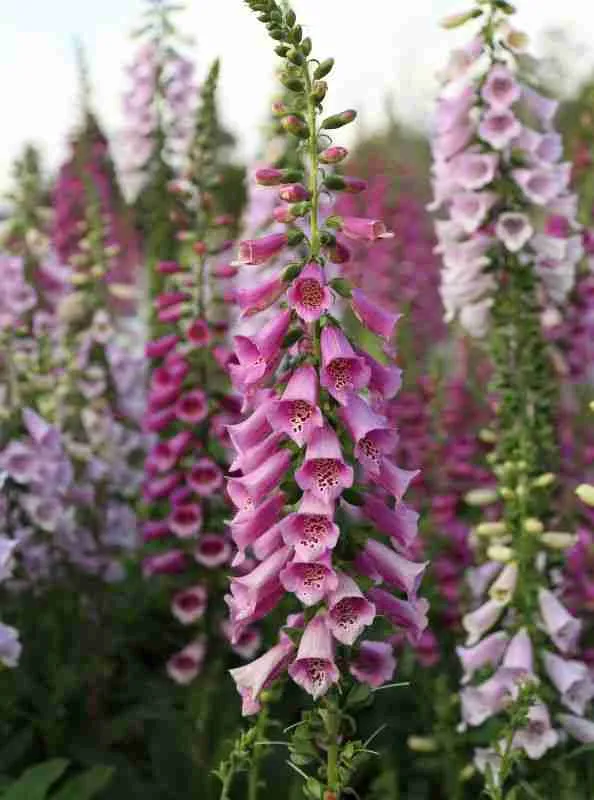
A delightful choice for your garden is the Foxglove, a biennial seed that is sure to leave a lasting impression. With its tall stalks adorned with charming bell-shaped flowers in shades of peach, pink, purple, and white, the Foxglove is truly a sight to behold. This timeless plant not only adds height and drama to bouquets, but it is also incredibly easy to grow from seed, making it a perfect addition to any cutting garden.
One of the many wonderful qualities of the Foxglove is its versatility. While it undoubtedly shines in a cutting garden, it can also enhance borders, cottage gardens, or woodland gardens. Planting a bed of foxgloves can create an enchanting and magical atmosphere that is hard to replicate with other flowers.
However, the Foxglove offers more than just its stunning beauty. It is also beloved by pollinators such as bees and butterflies, making it an environmentally-friendly choice for your garden.
Foxgloves are promiscuous and proficient at self-seeding. So do be aware that self-sown plants may not resemble what you think is the parent plant if you have multiple varieties.
Campanula
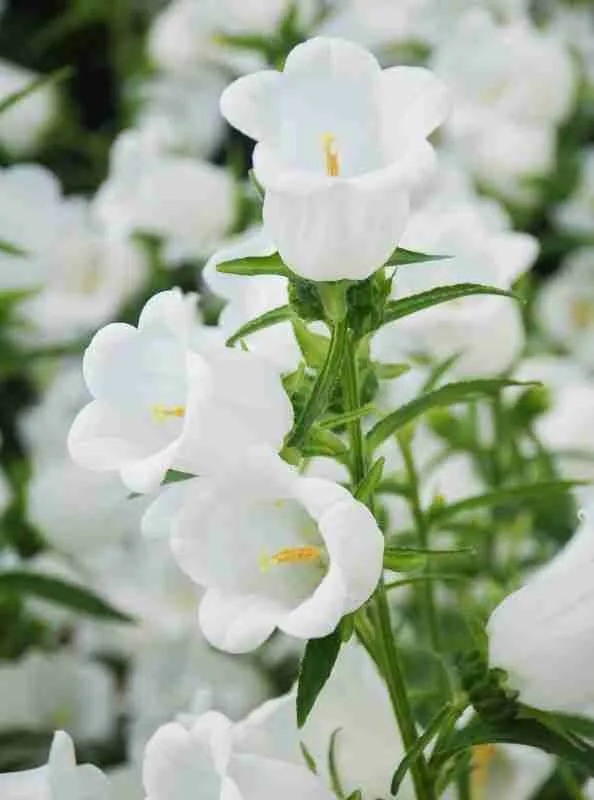
Campanula, also known as Bellflower or Canterbury Bells, is a beautiful biennial seed that can add a touch of elegance to any garden. It’s perfect for bringing texture and dimension to floral arrangements. With its delicate, bell-shaped flowers in shades of blue, purple, pink, and white, it’s no wonder that campanula is a favourite among gardeners and cut-flower enthusiasts alike.
Campanula is just what you’re looking for if you want a plant that’s easy to take care of. It requires minimal maintenance and can thrive in various conditions, from full sun to partial shade.
There are many different varieties, some more tall and impressive than others, so be sure to choose the varieties that are suitable for cutting.
Other biennials
Other delightful biennials that you could consider adding to your collection are Sweet Williams. These charming plants boast clusters of small, fragrant flowers and tend to bloom relatively early in the season and continue for months on end. Another option is hollyhocks, which showcase stunning tall spires of beautiful blooms.
With a little bit of thoughtful planning, biennial seeds can truly kickstart your cutting garden each year. The key is to sow them in June and then allow them to grow undisturbed for a year before they burst into bloom.
If you’re looking to buy seeds, I have seeds for most of the biennials mentioned above in my shop.
So go ahead, select your favourite biennial seeds, and embark on a journey towards creating a flawless cutting garden.
Happy Gardening!



